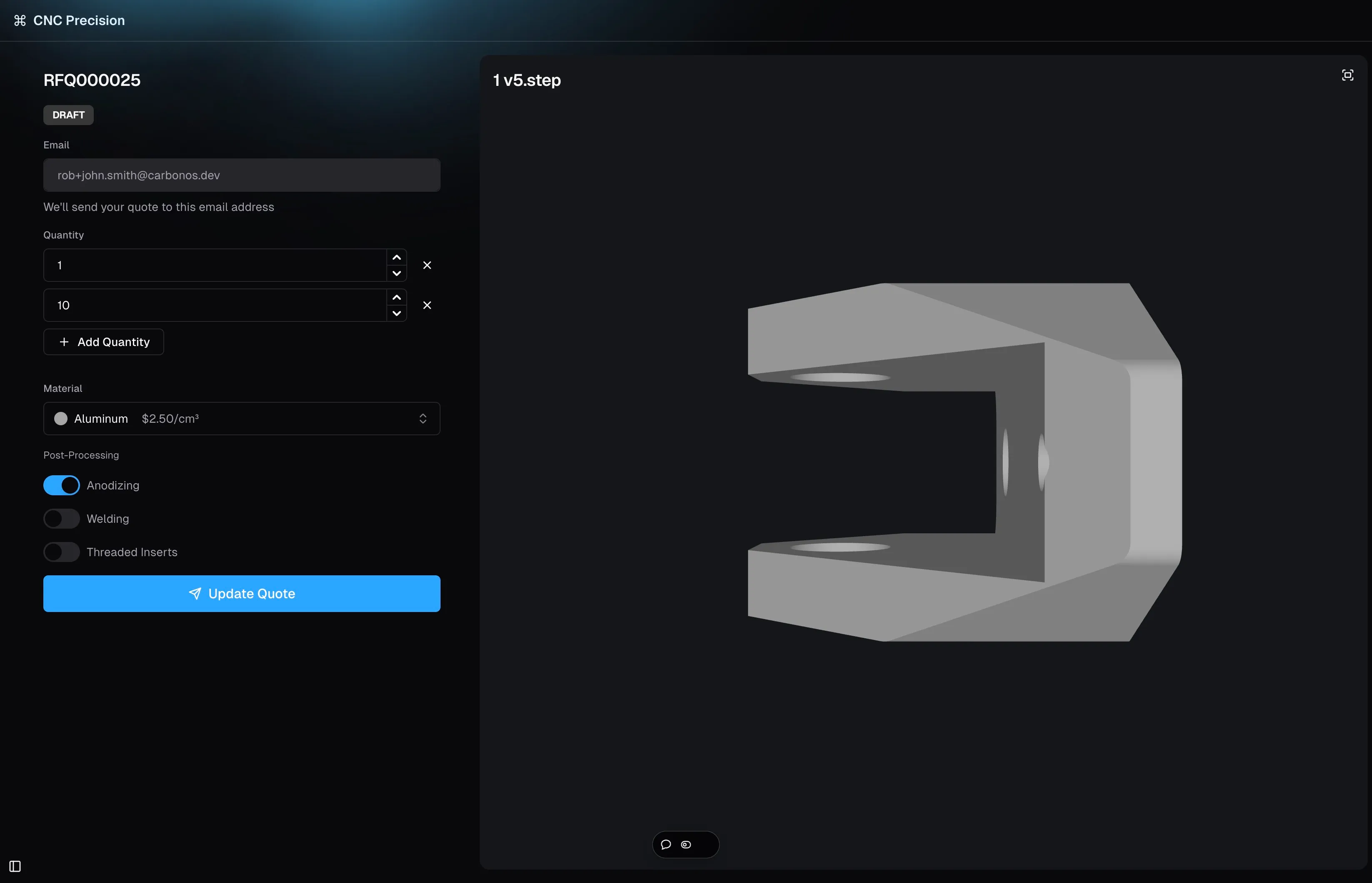How Digital Manufacturers Can Craft a Delightful Buyer Experience in 2025

E-commerce pioneers like Amazon have forever changed buyers' expectations by providing frictionless one-click purchase options, comprehensive order tracking and history, quick turnaround times, and a seamless search experience. These expectations have permeated other areas of commerce beyond consumer goods, including digital manufacturing. In 2025, supply chain buyers want to be able to:
- Do an Internet search
- Quickly find suppliers who sell what they need
- Get pricing ASAP (instant pricing is ideal)
- Place an order and track its progress
- All without ever picking up the phone
Moving from a traditional email or phone-based system to a digital buying experience may sound like a daunting task. But it's actually easier than you might think – you just need to break the problem down into smaller pieces.
In this article we'll break down the steps you can take to craft a delightful buying experience for your customers.
Table of Contents
- Make it Easy to Find You
- Reduce Friction for First-time Buyers
- Provide Self-Service Options for Repeat Buyers
- Choose the Right Software Stack
Make it Easy to Find You
It may seem obvious, but the first and most important step in building a digital buying experience is creating a website that is easily discoverable. You want your website to rank highly in your customers' search engine results.
There is an entire discipline of marketing devoted to this subject, so we won't cover it in exhaustive detail here. The gist is that your website should load fast, include keywords that your customers search for, and provide helpful content that increases the average amount of time customers spend on your site.
Reduce Friction for First-time Buyers
Buyers hate friction. One of the keys to Amazon's success is that they make it so easy to buy from them.
Any step of the buying process that is more difficult than it needs to be creates an opportunity for the buyer to abandon the purchase. This is especially true for first-time buyers, since you haven't yet established a relationship.
Here are some simple steps you can take to dramatically reduce friction for your first-time buyers:
Make it Clear What You Sell
Your website needs to be very clear about what products and services you sell. Highlight your capabilities, especially any capabilities that differentiate you from your competitors. Not only will this help with discoverability (keywords, etc), it will help your buyers quickly determine that you can solve their problem and move to the next stage in the buying journey.
Build a Custom Intake Form
Custom manufacturers need to collect information from their customers in order to generate pricing. However, different kinds of manufacturers need to collect different kinds of information:
- Make-to-Print Job Shop: Make it as easy as possible for customers to upload prints, 3D models, and other related documentation.
- Configure-to-Order Manufacturer: Provide a dynamic Configurator, so customers can select all of the relevant options from a structured form.
A custom form that is unique to your business allows you to collect the exact information you need to generate pricing for the job. Using structured fields like drop-down selectors and date selectors minimizes the effort required from the buyer to request a quote (and also makes your jobs easier when you receive the form submission).

Provide Self-Service Options for Repeat Buyers
Repeat buyers have overcome the initial hurdle of finding a supplier who can meet their needs (you!), but they still face other kinds of friction. Repeat buyers want to be able to:
- See their full history of quotes and orders
- Place a repeat order for something they've already purchased
- Get a fast quote for net-new projects
- Track the progress of current orders, including shipping dates
Build a Custom Self-Service Portal
The best way to minimize friction for repeat customers is to build a custom self-service portal. Once a customer logs in to the portal, they will be able to do all of the above without having to reach out to your company.
The self-service portal reduces communication overhead. Customers don't like having to ask when their order will ship, and you probably don't like having to field those questions. Giving customers the ability to self-serve for the majority of their common needs makes it easy to do business with you, and allows your team to focus on providing exceptional customer service for interactions that can't be handled in the portal.
Choose the Right Software Stack
Building a Custom Intake Form and Custom Self-Service Portal will dramatically reduce the friction your customers experience in their buying journey. But in order to build the Form and Portal, you will need to build on top of the right software stack.
Submissions from the Intake Form could feed a communication tool like Slack or Microsoft Teams, or possibly a CRM tool like Salesforce or Hubspot. However, given that these inquiries will eventually turn into orders, it generally makes the most sense to capture submissions in your ERP/MES.
Similarly, the Self-Service Portal needs to provide customers with secure access to their quote and order history, and display the progress of current orders. That information all likely lives in the ERP/MES as well.
There are many considerations that go into selecting (or building) the right ERP/MES solution. Ideally, the Intake Form and Portal should be built on top of a system that:
- Has a robust API (REST and realtime)
- Captures custom form submissions as structured data
- Automatically generates Bills of Material and Bills of Process from form submissions
- Provides robust permissions management for customer data
Carbon is an API-first, extensible operating system for digital manufacturers. We designed it from the ground up to do all of the above, and more. Carbon serves as the foundation of your vertically integrated, end-to-end solution, providing automation and enhanced visibility across the whole buyer journey from RFQ through to shipped orders.
If you're interested in learning more about Carbon, reach out and we'll schedule a call.
